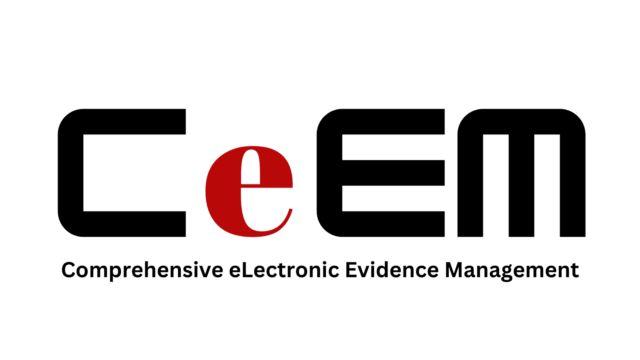As legal proceedings increasingly rely on digital evidence, Comprehensive eLectronic Evidence Management (CeEM) has become a critical component of litigation, arbitration, and regulatory investigations. Without a structured approach, legal professionals may face challenges related to inadmissibility, evidentiary gaps, and security risks. The evolving legal landscape demands an understanding of secure collection, authentication, and presentation of digital evidence in compliance with regulatory standards such as the Bhartiya Sakshya Adhiniyam (BSA).

Why Comprehensive eLectronic Evidence Management (CeEM) matters
Digital interactions generate vast amounts of potentially relevant legal evidence, including emails, encrypted messages, cloud-based documents, metadata, and digital contracts. Properly managing such evidence is essential to ensure its integrity, authenticity, and legal admissibility. Key aspects of electronic evidence management include forensic collection, preservation, chain of custody maintenance, and courtroom presentation.
Key Components of Comprehensive eLectronic Evidence Management
A well-structured approach to managing digital evidence enhances accuracy, security, and efficiency in legal proceedings. Key considerations include:
- Digital Forensic Readiness Assessment(DFRA)
- Evaluating an organization’s capability to collect, preserve, and analyze digital evidence.
- Implementing proactive measures to ensure that evidence is legally admissible and readily available when needed.
- Identifying gaps in digital forensic preparedness and establishing compliance with industry standards and legal frameworks.
- Enhancing incident response mechanisms by integrating forensic readiness into cybersecurity strategies.
2. Forensic Collection & Secure Prevention
- Acquisition of digital records from emails, cloud servers, mobile devices, and enterprise systems.
- Ensuring tamper-proof evidence collection using forensic tools compliant with global standards.
- Metadata preservation to establish authenticity and credibility in legal proceedings.
3. Regulatory Compliance & Admissibility Assurance
- Adhering to Section 63 BSA requirements for electronic evidence.
- Understanding legal standards for validating digital evidence certifications.
- Compliance with Bhartiya Nagarik Suraksha Sanhita (BNSS) for digital forensics.
4. Chain of Custody Documentation
- Tracking evidence handling to ensure transparency and legal defensibility.
- Secure storage solutions for digital evidence to prevent unauthorized modifications.
5. Expert Witness and Courtroom Cross Examination
- Providing forensic insights into electronic records authentication.
- Effective presentation of digital evidence in court through demonstrative exhibits and forensic reports.
- Training legal teams on examining digital evidence and cross-examining forensic experts.
6. Continuous Risk Assessment & Compliance Audit
- Reviewing digital evidence management processes for compliance.
- Conducting audits to identify and mitigate vulnerabilities in handling electronic records.
- Implementing best practices to prevent e-discovery risks and fraudulent evidence manipulation.
Technology plays an increasingly vital role in managing electronic evidence. AI-driven analytics, automation in digital forensics, and blockchain-based evidence tracking are shaping the future of legal practice. Law firms that adopt structured digital evidence management frameworks enhance their ability to navigate complex cases efficiently.
This is the first in a series of articles exploring Comprehensive eLectronic Evidence Management and its growing importance in the legal domain. Upcoming topics will cover: ✔ Bhartiya Sakshya Adhiniyam & Electronic Evidence: What Lawyers Must Know
✔ Digital Forensics & Chain of Custody: Best Practices for Law Firms
✔ How Law Firms Can Leverage CeEM to Strengthen Their Cases
✔ The Role of AI & Automation in CeEM.
✔ Cybersecurity, Data Breaches & Electronic Evidence: Are You Prepared?
Summary
Electronic evidence is becoming a cornerstone of modern legal practice. Understanding and implementing Comprehensive eLectronic Evidence Management, starting with Digital Forensic Readiness Assessment (DFRA), can significantly enhance legal preparedness, ensuring that digital records remain secure, authentic, and legally admissible. Staying informed about best practices in EEM will help legal professionals adapt to the evolving digital legal landscape.
About CorpoTech Legal
CorpoTech Legal specializes in corporate law, technology law, cyber forensics, and digital evidence management. With expertise in electronic evidence laws and regulatory compliance, our focus is on supporting legal professionals in navigating the complexities of digital legal practice.
